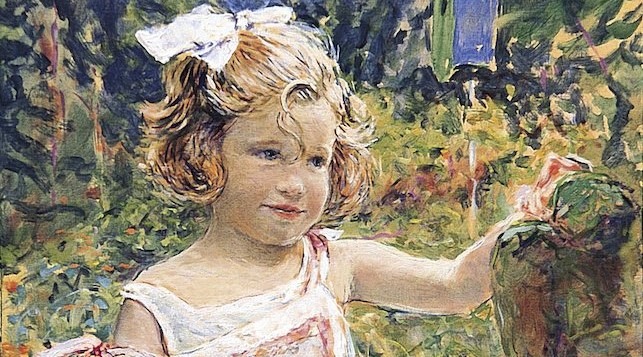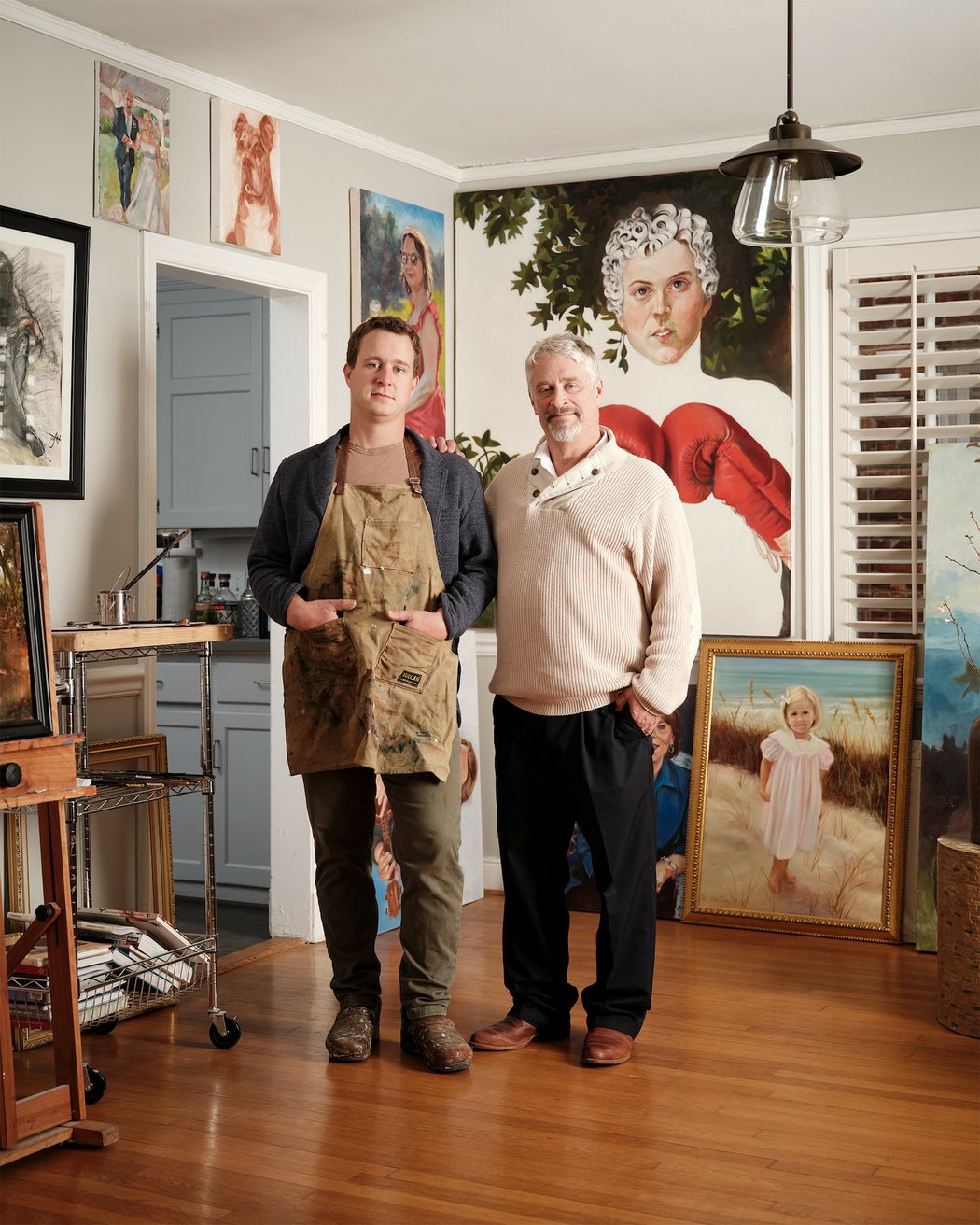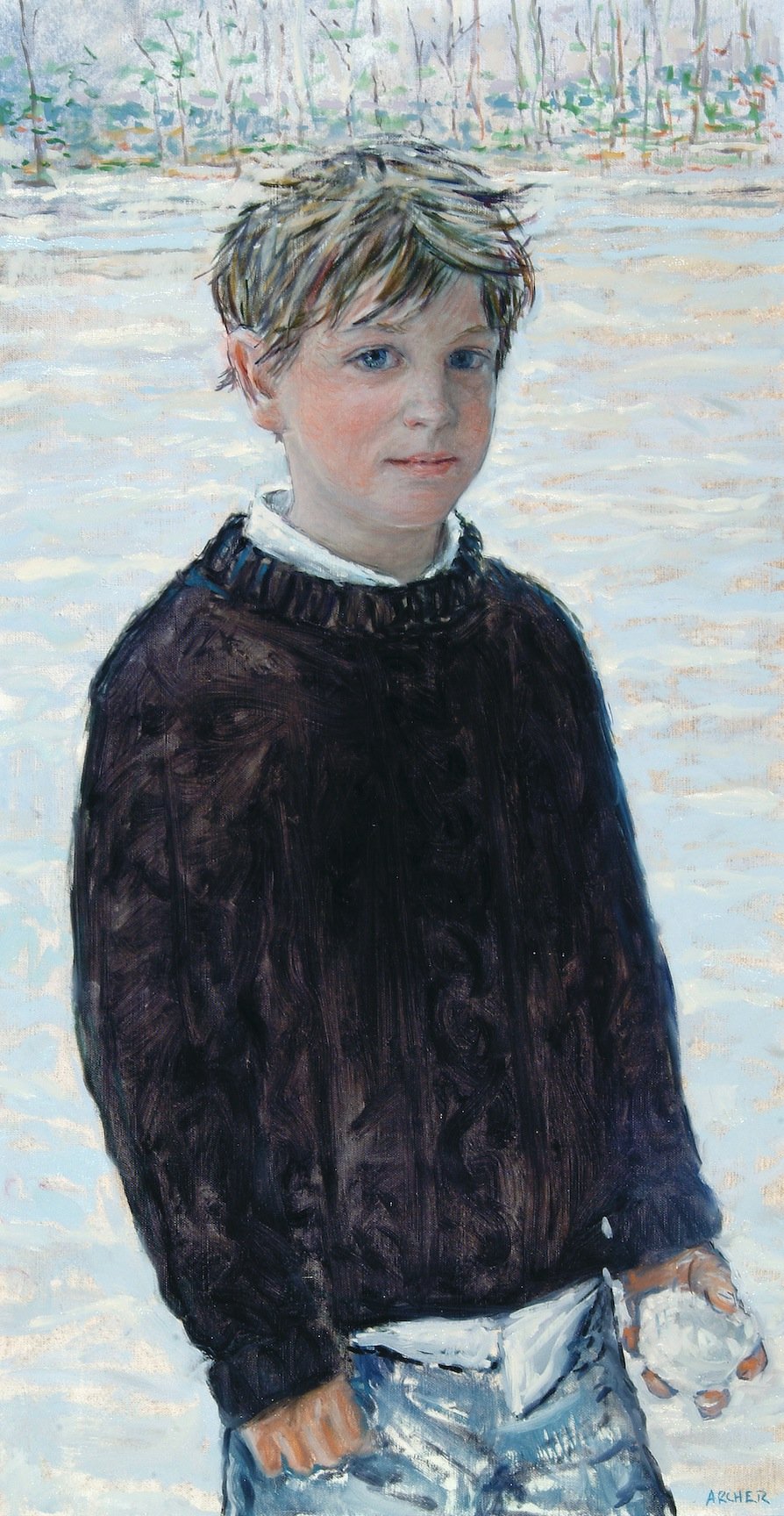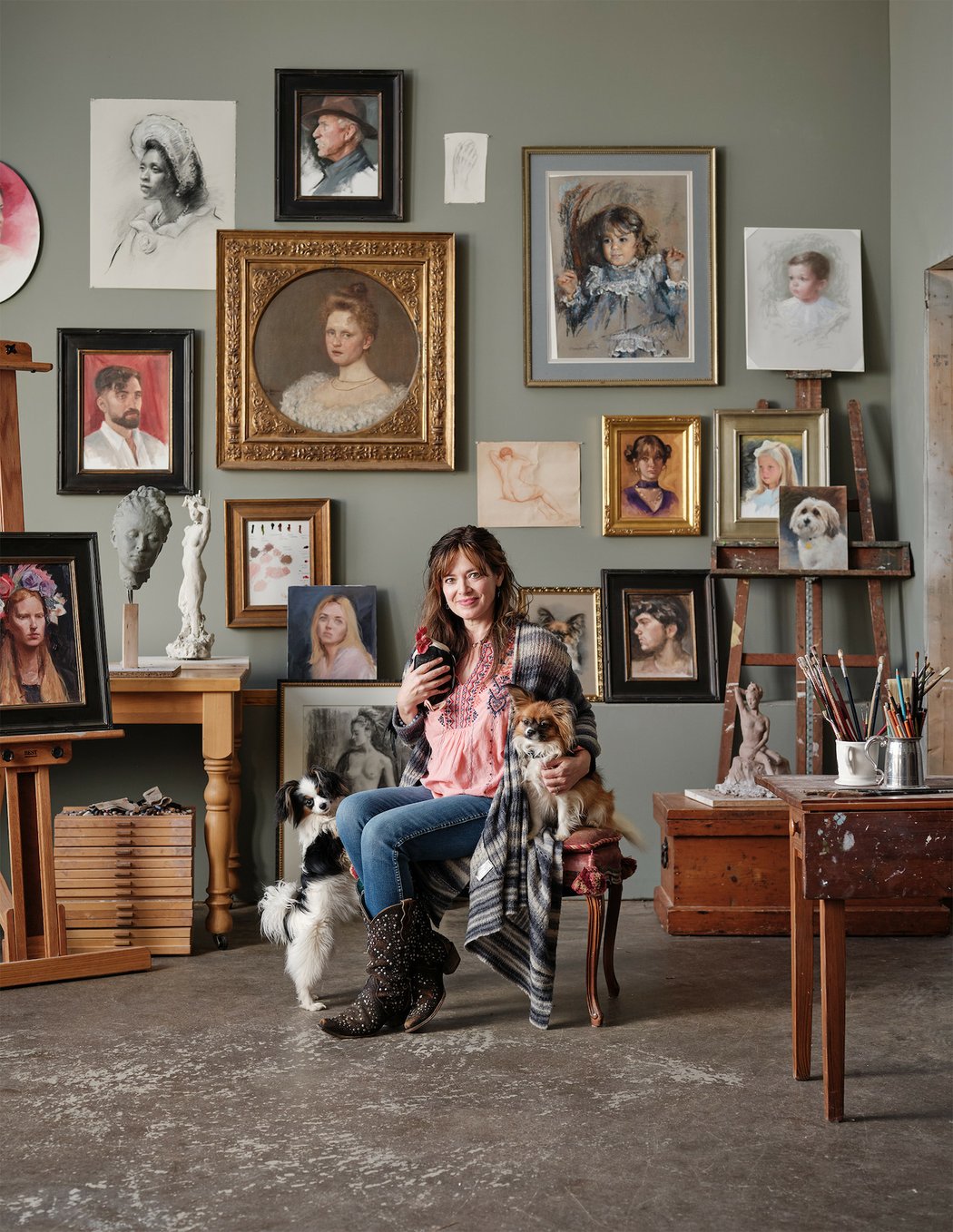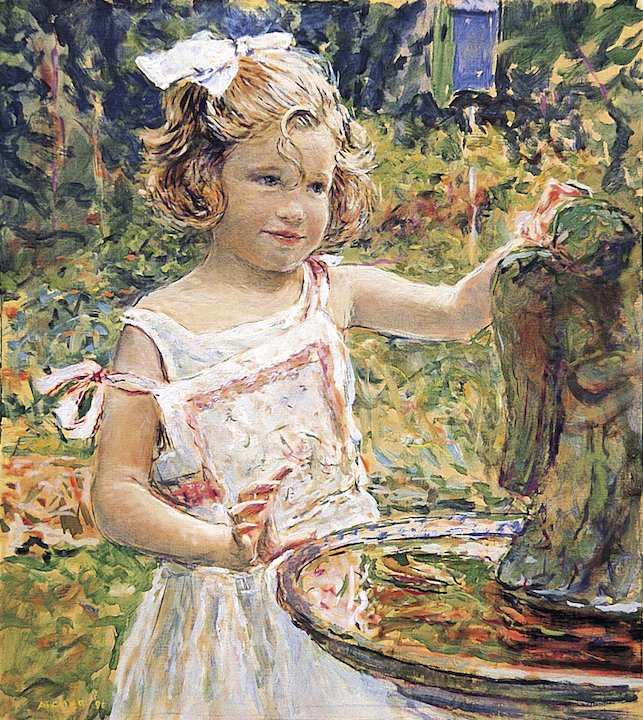The online edition of Virginia Living magazine is currently running a feature article I wrote for the June print edition, about the tradition of portrait painting in the South, and Virginia in particular. A+A is pleased to re-post the second portion of this article todayy:
In the past, the client and artist would meet for lengthy portrait sittings. Now, a photo shoot brings a subject’s mannerisms, gestures, or the mischievous glint in a child’s eye into view. “I want a super strong likeness, without unnecessary flattery,” says Richmond artist Nancy Mauck. “I’m giving the viewer a glimpse of who this person is, and what they’re like.”
Mauck follows advice from an early mentor, politely declining requests to subtract a few pounds or paint away gray hair. “It goes beyond that one painting. When an artist becomes known as an enhancer, it impacts their career,” she explains. “I can’t alter reality, but I’ll show you on your best day.”
“Body language conveys a lot, too,” says Clement. She recalls a photo session with a government official. The man looked stiff until he stepped away from the lens to relax into his natural posture. “That’s him, his wife and I said—get the photo now.”
A formal portrait of a governor, bishop, or CEO leaves little room for the artist’s individual style. But some, like Archer, bring their own aesthetic to the work, striving for art that stands on its own merit, whether the subject is familiar or not. Not everyone welcomes this approach, Archer acknowledges. He once visited the Varina home of Jimmy Dean, the late country singer, to discuss a portrait of his wife. When Archer showed his work, the sausage magnate took one look and asked: “What’s all this stuff?”
“He was talking about my brush strokes,” Archer says. “He wanted the portrait to look like a photo. I just told him, ‘I’m not your person.’”
Archer’s favorite portrait artist, Amedo Modigliani, painted his famously attenuated subjects in France in the early 1900s. “He was never hired—he just picked a model and started painting. If I had to have someone paint my portrait, I’d choose Modigliani.”
The Medium and The Message
Clement says portrait media are changing rapidly. “Corporate portraits are typically done in oil; they’re more traditional,” she says. Children’s portraits lend themselves to pastel or conté—a soft charcoal crayon that delivers a terra-cotta color. One of Clement’s artists even combines watercolor with charcoal or pencil.
Mauck prefers oils and pastels. “Oils come in so many radiant colors, and I actually love mixing them,” she says. “But there’s an immediate gratification with pastels, the color is right there in the box.”
Phil Ramsey says pastels break and acrylics dry too quickly. “I’m an oil painter,” he concludes. “And that shows I mean what I do.”
Archer, too, uses oils, painting directly onto the canvas without sketching the composition first. Karicher works miracles in graphite pencil, and lately, he’s settled on an unorthodox mix of enamel house paint, glycerin, and tints. “They allow me to work fluidly and expediently,” he says. “But they’re not for everybody, especially the gallery owners, who don’t know what to say about them.”
Subjects Matter
For private commissions, Archer’s favorite subjects are children. Phil Ramsey once painted seven from one family, then turned around to paint another family with four children. Mauck, too, paints these subjects plus a few pets. But she’s also been tapped for official portraits. In 2009, she painted The Honorable S. Bernard Goodwin, chief justice of the Supreme Court of Virginia. And after painting Governor Bob McDonnell’s official portrait in 2014, she joined him for the unveiling ceremony at the Library of Virginia.
When colleges or corporations commission portraits, it’s often to honor a retirement. At a school, the subject may stand in front of a building they helped fund. “That way, in 100 years, people will know the role the subject played in that building,” Clement says.
Artists also consider the finished portrait’s setting and context. Will it hang on a living room wall? Or in a public building, amid a larger collection? “I’m working now with a woman whose painting will be hanging in a large hall of men,” Clement says. “She said, ‘I want to look like I can hold my own and still show a feminine side.’ We chose a dark frame with decorative hand etching to show both.”
Then there’s the matter of clothing. Classic is best. A good portrait should never go out of style. And solid colors are better than patterns or prints. A gingham shirt or pinstriped suit adds hours of tedious work to a painting, so an artist will charge for the extra time.
Connecting with Clients
Long before the canvas is stretched, most artists spend time getting to know their subject. Clement says one artist visited a college president he’d been commissioned to paint, staying overnight with the family in their home. “He wanted to understand both his subject and the campus community,” she explains.
Phil Ramsey likes to meet a client at home or in their workplace, to do an initial sketch, and take photos. After three months of painting, “if I’m not sure, I’ll send a picture over,” he says, to get the subject’s input. “But if I feel I’ve hit a homer, I’ll do a presentation, unveil it slowly, and handle it like nitroglycerin.”
Clients should know that portraiture is intimate, Wyatt Ramsey adds. “It’s an act of love. You’re not buying a sofa. By the time I finish a portrait, I’ve lived and breathed this person every day for weeks.” In return, even a small unveiling to celebrate the moment is a sign of respect from client to artist.
Life Lessons
Like all successful portrait artists, Archer counts himself lucky. At Skowhegan, he says, “Someone from The New York Times gave a talk, and I was astonished to find that only one in 5,000 artists makes a living with art.” Today that figure is more like 15,000.
His three sons have shown artistic talent of their own. One graduated from Parsons School of Design in New York and now creates clothing. Another, a fine arts photographer, skipped college altogether. “He said to me: ‘I think maybe I’ll go to art school,’” Archer says. “I told him, ‘I can’t see what you need to do to improve.’”
He’s grateful that his own father—a doctor who enjoyed sculpture in his spare time—acknowledged his interest to make a snap decision about art school. “It sort of validated me,” Archer says. “It’s so easy to go down what’s considered the normal stream, but when you take a chance, you discover your own strengths. Everybody should be able to do that.”
All Creatures Great and Small
In her animal portraits, Christy Talbott captures their dignity and spirit.
Best known for her pastel and pencil portraits of children, Christy Talbott captures the humanity of pets, as well. For more than a decade, the Glen Allen artist has painted 50 of them—from dogs and cats to horses—some in pastel, though she prefers oil.
A graduate of the Art Institute of Pittsburgh, Talbott has been painting since high school, when commissions would come to her in a manila envelope with a photograph and a $20 bill inside. Later she drew caricatures at Kings Dominion. “I learned I wasn’t afraid to work in front of people, and from life,” she says.
With pets, she says the process can go more quickly than with people. “It’s something about the fur, and it’s easier to get a likeness.” She looks for the expression in their eyes and takes advantage of a floppy ear, or an errant lock of hair to express their individuality. “There’s that little character, and I capture that,” she says.
She works mostly from photographs taken at a client’s home, or in her newly built, north-facing studio. “The sun’s behind you, and the lighting changes very little,” she says.
Captured in pencil, a golden retriever named Holly has the distinguished look of a senator. Like many of her pet commissions, “that was a gift for a wife from her husband” to honor a beloved dog who’d passed on. Thanks to Talbott’s artwork, Holly will be remembered for a lifetime.
For more, go here.

